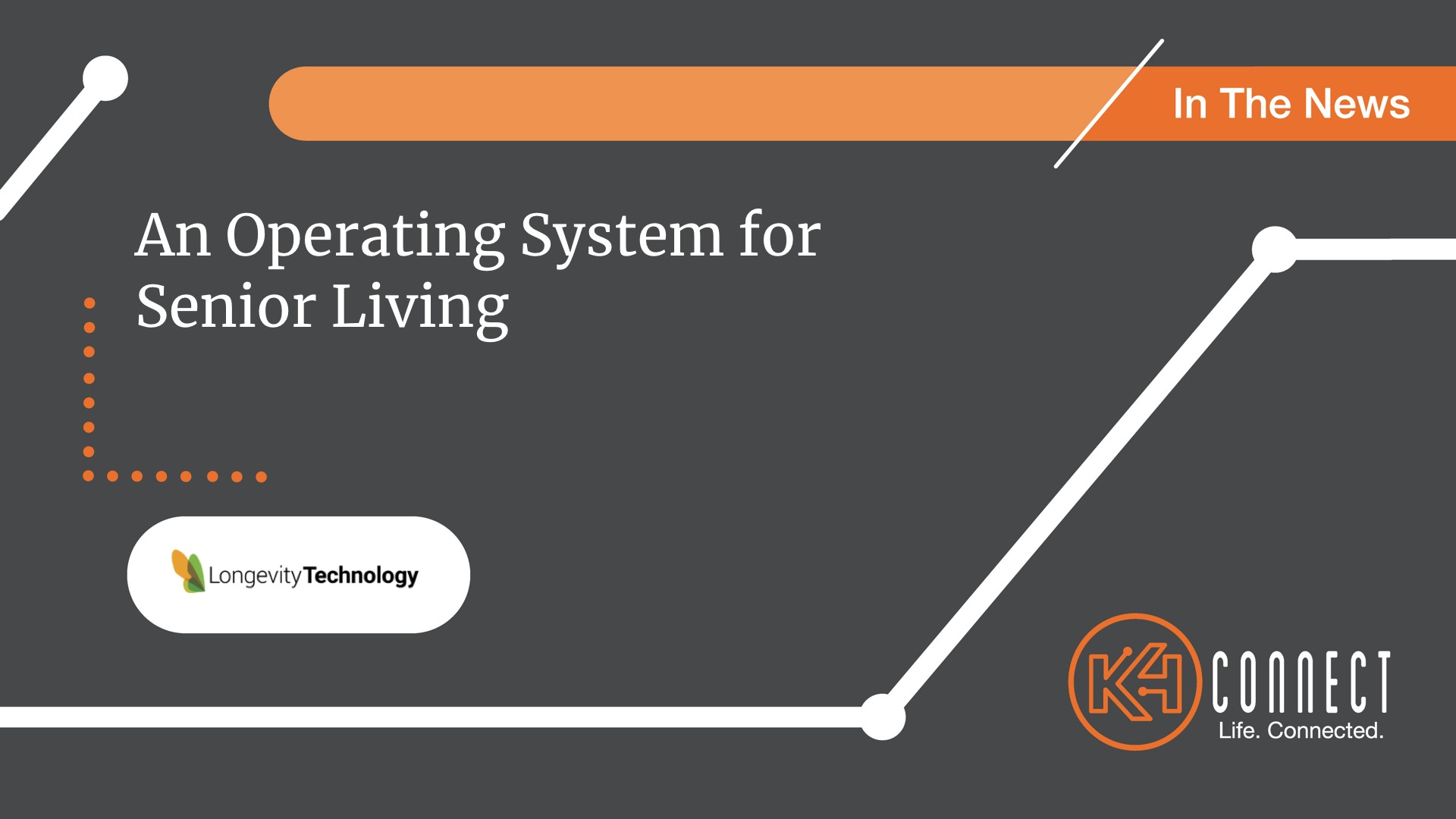K4Connect aims to create a smart OS for senior living communities with a single interface for all technologies.
By: Dany Sullivan
March 10, 2020
Technology adoption among older adults has been consistently increasing over the years. In 2000, just 14% of those aged 65 and older used the internet, compared with 73% today, and more than half of them are smartphone owners. [1] But despite the high adoption levels, use of technology by the elderly is still hampered by usability and design issues.
A recent University of California San Diego study looked at technology use by older adults and found that “a significant source of frustration in their interactions with digital products lay in the inadequacies in software and hardware interfaces that permit access to different functionalities.” [2]
Longevity Technology: The ‘lack of use’ challenge has implications on Longevity, and in particular healthspan, as our quality of life is increasingly associated with technology, from health and wellness apps to smart home and assistive technologies.

One company seeking to resolve this challenge is North Carolina start-up K4Connect. With its K4Community solution, the company has developed a single “operating system” for senior living communities that brings together a wide range of smart products for residents, staff and operators in a single, simple interface.
K4Connect’s co-founder and CEO is F. Scott Moody, a technology veteran and former CEO of fingerprint sensor firm AuthenTec, which was acquired by Apple in 2012 and provided the foundation of its Touch ID feature.
“After that I decided to retire, I can honestly say I was pretty burnt out,” says Moody.
But retirement didn’t last long. On a trip to Rwanda, Moody met an entrepreneur who helped battered women become bakers, and was inspired to start working again on something that could make a difference in people’s lives. Shortly afterwards, he got together with Jonathan Gould, the technology brains behind K4Connect and they came up with the idea for a single “multi-modal” operating system for an environment – something they called FusionOS.
“When you think of an operating system, you think of a physical device, your phone or your PC, but what we were looking at was, how does that become an operating system for an entire physical entity, whether it’s a home, whether it’s a hotel, whether it’s a school?” says Moody. “What multi-modal means is the idea of being able to integrate devices, whether they’re home or health applications, services or standalone systems, all into one system.”

“At the end he asked me, what does K4Connect do?” recalls Moody. “And I explained how all of these things could work in a very responsive way in your home and just make things easier, more convenient, and so on. And he said, ‘I have MS and that would be a great product for me.’”
That conversation became the catalyst for pivoting the company to focus on older adults and people living with a disability – and K4Community was born.
… the average age of the 30,000 people using K4Community today is over 83 … 85% of those people are now using the system on a daily basis.
Launched in 2017, K4Community focuses on six key pillars to enable smart senior living communities. Three of which are specifically focused on the residents: home, wellness and engagement. Moody describes the end-user experience as “the mission” of his company, pointing out that the average age of the 30,000 people using K4Community today is over 83, and that 85% of those people are now using the system on a daily basis.
“Our mission is to make their lives better, right? We do that,” he says. “And we do it for a demographic that is generally very, very underserved by technology. We provide utility in their lives, whether it’s home automation, whether it’s communication, whether it’s engagement.”

“They love all the different technologies, and they know that they can solve problems for them, but they don’t have the bandwidth,” he says. “We bring together all these different things into one. We integrate anything really, even at a device level. We don’t make any devices – it doesn’t make any difference what the device is or who made it, it doesn’t even make any difference what the protocol is, because we can integrate with it.”
Click here to head to Longevity Technology to read the story!

